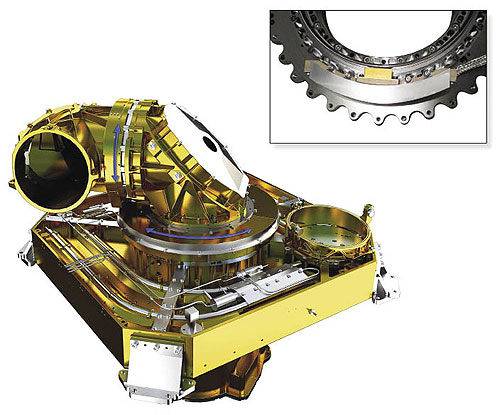The ability to handle harsh environments and deliver promised features and long life are critical attributes of all equipment designed for use in space. For encoders, Renishaw recently collaborated with Tesat-Spacecom GmbH to develop an angle encoder with high radiation hardness, very high accuracy, and qualification for 15 years life in a GEO space environment.

The device combines Renishaw’s optical encoder technology with Tesat-Spacecom’s knowledge and experience in ruggedized space electronics. The GEO space encoder’s read-head is designed to survive harsh environments, with 150 g vibration resistance and wide operating temperature range, combined with an optical detection principle. The read-head has a mass of only 300 g and power consumption is typically less than 1 W. Special attention on radiation hardness imparts long life to the encoder—achieving qualification for 15 years of use in GEO space conditions.
The scale consists of a stainless steel ring with graduations marked directly on the periphery, eliminating shock/vibration-induced breakages associated with traditional glass discs. The graduations include IN-TRAC™ reference marks that are directly embedded in the incremental channel, arranged in a distance-coded pattern so that the distance between any two adjacent reference marks is unique. This means that only a small rotation is required before absolute position is determined by the on-board field-programmable gate array (FPGA). The ring format enables easy integration into rotary axes, with a large through-hole for easy routing of utilities.
The ring is mounted directly to the rotor, with the head mounted to the stator. There is no contact between the two parts, so no need for separate bearings or flexible couplings. This arrangement improves reliability and eliminates backlash, shaft wind-up (torsion) and other irregular metrology effects that plague traditional enclosed encoders.
High accuracy is achieved with short-range error less than 0.5 µrad RMS and long-range error less than 5 µrad (without mechanical errors). Combined with resolution of less than 0.5 µrad, the system is suited to applications demanding precision metrology.
Renishaw
www.renishaw.com
Filed Under: Aerospace + defense, Encoders • optical, MORE INDUSTRIES





Tell Us What You Think!